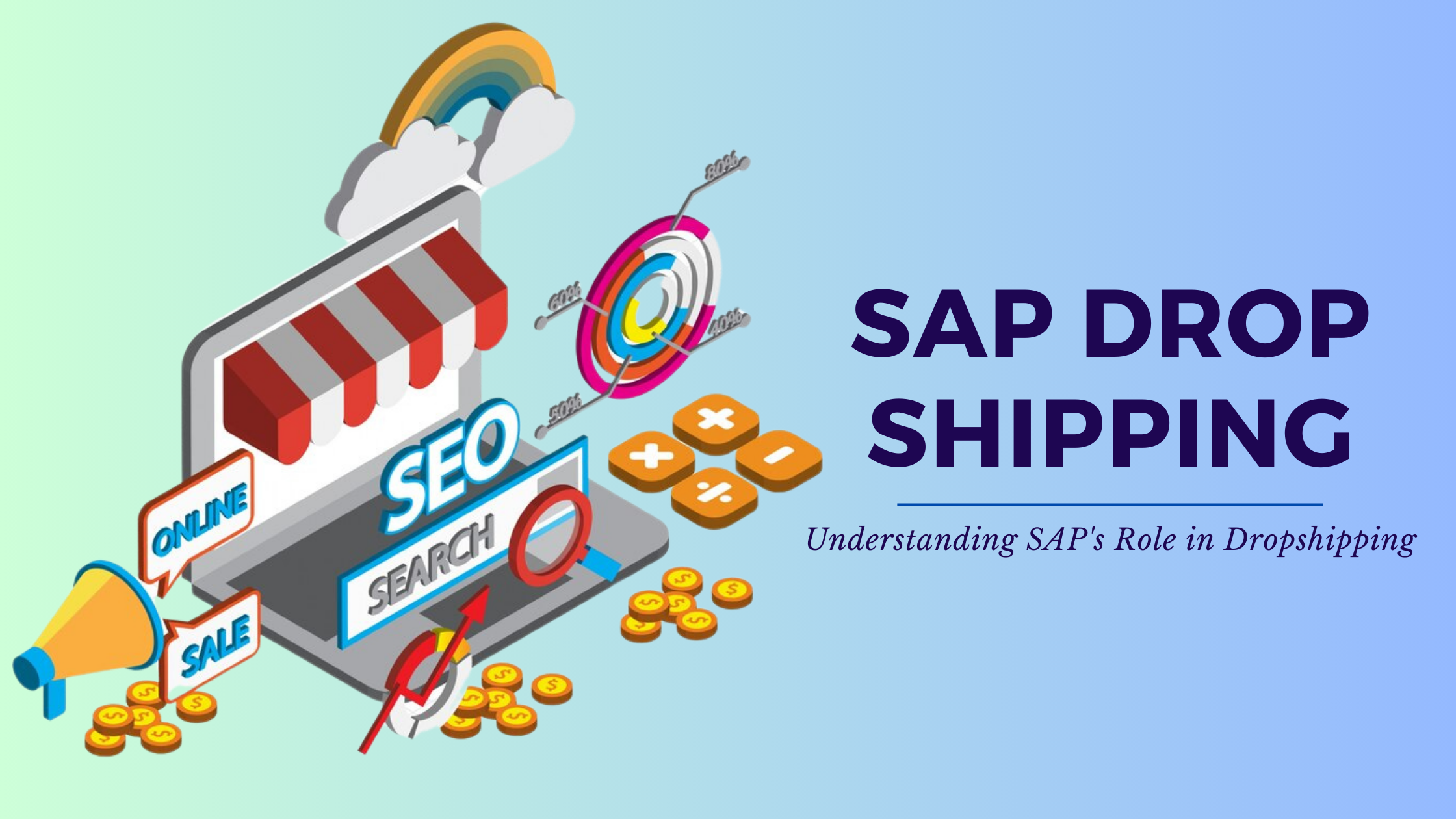SAP Drop Shipping: Understanding SAP’s Role in Dropshipping


SAP Drop Shipping: Understanding SAP’s Role in Dropshipping
Dropshipping has revolutionized the way businesses manage inventory and fulfill orders. In this article, we’ll delve into the world of dropshipping, specifically focusing on SAP’s role in streamlining this process. Whether you’re a seasoned e-commerce entrepreneur or just dipping your toes into the dropshipping waters, understanding SAP’s contribution is essential.
What is Drop Shipping?
Drop shipping is a fulfillment method where the seller (you) doesn’t keep goods in stock. Instead, when a customer places an order, you pass the order details to a manufacturer or vendor who directly ships the products to the customer. This model eliminates the need for warehousing and inventory management, making it an attractive option for businesses of all sizes.
SAP’s Involvement in Dropshipping
1. Material Master Data Configuration
The first step in enabling dropshipping within SAP S/4HANA is configuring the material master data. Specifically, you’ll set the Item Category Group in the Sales view. Here are the two options:
- CBNA (No Advanced Shipping Notification): Use this when the vendor doesn’t provide an advanced shipping notification. You’ll wait for the vendor invoice before issuing your own invoice to the customer.
- CBOR (Third-Party Sales Order with Shipping Notification): With CBOR, you expect the vendor to provide an ASN. You’ll issue your invoice based on the quantities specified in the ASN. CBOR is often preferred because it allows faster invoicing.
2. Line Item Configuration
After entering a sales order (e.g., using standard order type OR), the item category assigned to the CBNA material will be CB2. This line becomes complete after creating a purchase requisition and assigning its number to the order. The schedule line category incompletion procedure controls this process.
3. Purchase Requisition and Conversion
The purchase requisition number appears on the Schedule Line tab of the line details. The purchasing team converts this requisition into a purchase order. This conversion typically occurs via a scheduled background job.
4. Vendor Communication
The purchase order is then sent to the vendor, either electronically (EDI message 850) or through other channels (email, fax, etc.). The vendor ships the products directly to the customer.
Relevant SaaS Products for Dropshipping
Here’s a curated list of SaaS products that complement dropshipping operations:
- Niche Scraper: A powerful tool to discover top-selling products on platforms like AliExpress and Shopify. Explore Niche Scraper here.
- CJ Dropshipping: A comprehensive dropshipping platform that connects retailers with vendors. It offers a wide range of products and efficient order fulfillment. Visit CJ Dropshipping here.
- TrueCommerce: TrueCommerce provides EDI (Electronic Data Interchange) software for seamless communication with retailers. It streamlines order processing and inventory management. Learn about TrueCommerce here.
- ERPNext: An open-source ERP system that includes dropshipping features. It allows businesses to manage inventory, sales, and procurement efficiently. Explore ERPNext here.
- Oberlo: Oberlo is a Shopify app designed for sourcing products from AliExpress. It simplifies product import, order fulfillment, and inventory management. Discover Oberlo here.
- Spocket: Spocket is a platform for finding high-quality dropshipping suppliers. It offers a curated selection of products and integrates seamlessly with e-commerce platforms. Check out Spocket here.
- Inventory Source: Inventory Source automates product data synchronization between suppliers and your online store. It ensures accurate inventory levels and real-time updates. Learn more about Inventory Source here.
- Aftership: Aftership provides shipment tracking and notifications for customers. Enhance the post-purchase experience by keeping customers informed about their orders. Explore Aftership here.
- ShipBob: ShipBob offers fulfillment services, including dropshipping. It handles order processing, packing, and shipping, allowing businesses to focus on growth. Discover ShipBob here.
- Zoho Inventory: Zoho Inventory manages inventory, orders, and shipping. It’s a comprehensive solution for efficient dropshipping operations. Learn more about Zoho Inventory here.
Conclusion
SAP plays a crucial role in orchestrating the dropshipping process, ensuring seamless communication between vendors, buyers, and customers. As e-commerce continues to evolve, understanding these dynamics becomes essential for success.
Disclaimer: The information provided in this article is for educational purposes only. Always consult with professionals before implementing any business strategies.
Explore Further:





